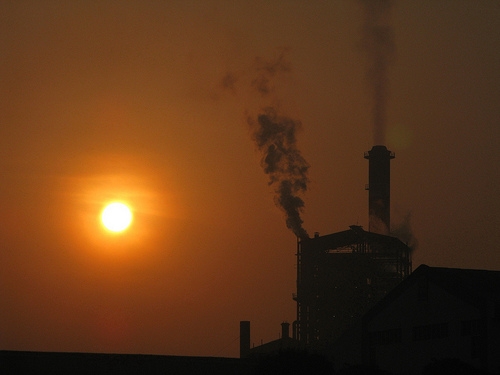
India's industrial production still disappoints in July
Manufacturing led the weak results and the country nudges deeper into stagflation.
"Industrial production (IP) growth accelerated marginally to +0.1%YoY in July 2012 from -1.8%YoY in June. This was lower than consensus expectations as per Bloomberg survey for growth of 0.5%YoY. On a seasonally adjusted sequential basis, the IP index improved to -0.2%MoM (vs. -1.8%MoM in June)," said Morgan Stanley Research in a quick comment.
"On a 3MMA basis, IP growth nudged up to an average of +0.3%YoY during the three months ended July 2012 from -0.2%YoY during the three months ended June 2012," it added.
Here's more from Morgan Stanley Research:
Manufacturing output remained weak, mining and electricity output decelerated in July: In the manufacturing segment, output improved marginally to -0.2%YoY compared to a fall of -3.1%YoY in June. Within manufacturing, industry group, publishing, printing and reproduction of recorded media contributed the most to the improvement, growing by 17%YoY followed by machinery and equipment (12.5%), textiles (8.3%) and coke, refined petroleum product and nuclear fuel (7.4%). On the other hand, electric machinery and apparatus contributed most to the weakness, declining -12.8%YoY, followed by office accounting and computing machinery (-12.2%), furniture manufacturing (-11.5%) and wearing apparel, dressing and dyeing fur (-10.6%)," it added.
Mining output weakened to -0.7%YoY vs. 0.2%YoY in June while electricity output decelerated to 2.8%YoY compared with 8.8%YoY in the previous month.
Consumer goods output decelerates sharply: Consumer goods output growth decelerated sharply to 0.7%YoY in July vs. 4.1%YoY in June. Within consumer goods, consumer durables output weakened to 1.4%YoY in July, partly on account of the high base effect (Jul-11 growth was 9%YoY) vs. 9.2%YoY in June-12. Consumer non-durables output edged up slightly to 0.1%YoY in July vs. -0.1%YoY in June.
Capital goods output remained weak, but improved to -5%YoY in July compared with -28.1%YoY in June. IP ex capital goods grew by 0.8%YoY in July vs. 3.6%YoY in June.
Basic goods output growth decelerated to 1.5%YoY in July vs. 4.2%YoY in the previous month, partially on account of the high base effect (basic goods grew by 10% in July 2011). Intermediate goods output weakened to -1.1%YoY in July vs. 0.6%YoY in the previous month.
Risk of a deeper growth shock rising: We expect that weak agriculture growth because of poor distribution of monsoons, continued deceleration in investment trend, a sluggish DM growth outlook and weakness in the service sector will keep growth at a 10-year low of 5.1% in F2013. We believe there is an urgent need for policy action from the government to address the deterioration in the fiscal deficit and persistent pullback in private investment. In the event of continued inaction from the government, we see high risk of a potential “deeper macro stress” scenario. That could entail further significant deceleration in GDP growth to 4.3% in F2013, sharper depreciation of the exchange rate, and a shock to the banking system with a huge rise in the impaired loan ratio above our current estimate of 9.5% by March 2014.
What about policy response? As we have been highlighting, we expect the stagflation-type environment to persist over the next three quarters. We think monetary policy will be less effective in dealing with the effects of a stagflation-type environment. We believe that the challenging inflation outlook coupled with persistent high fiscal deficit will not provide comfort to RBI to reduce policy rates in the next monetary policy review on September 17. We believe that the government’s loose fiscal policy and strong rise in real rural wage growth without commensurate increase in productivity growth is at the heart of the current stagflation type environment. Hence, the key to effective reduction in cost of capital will be the government’s efforts on fiscal tightening and management of rural wages.
























 Advertise
Advertise






